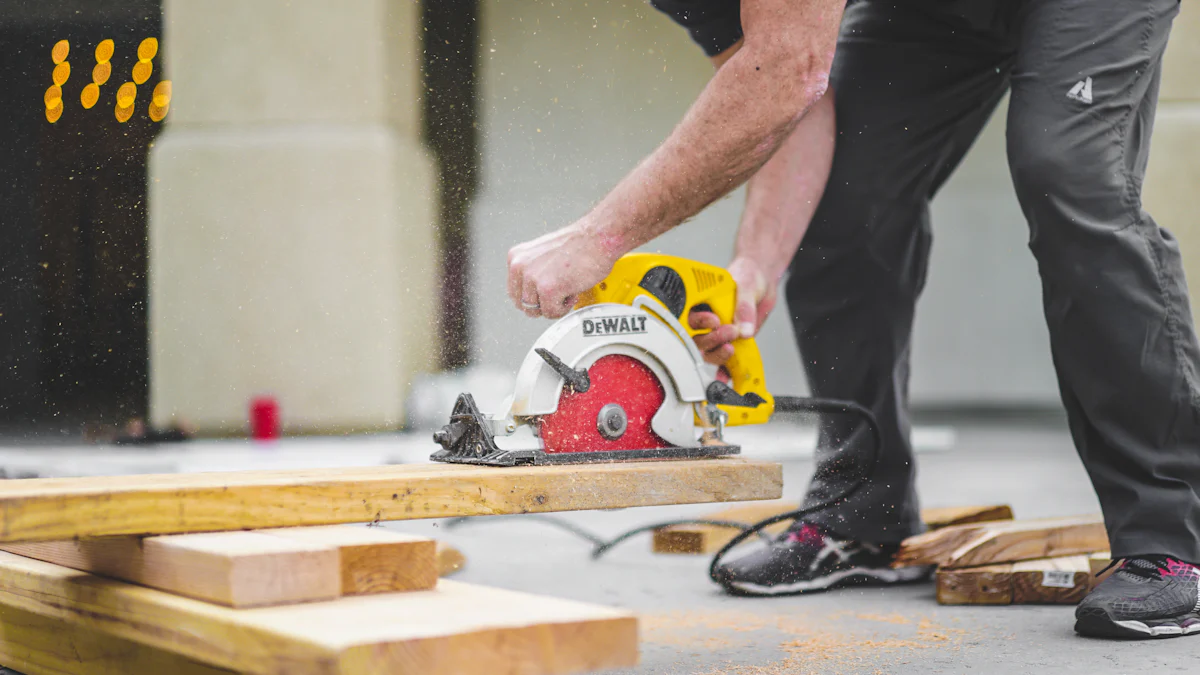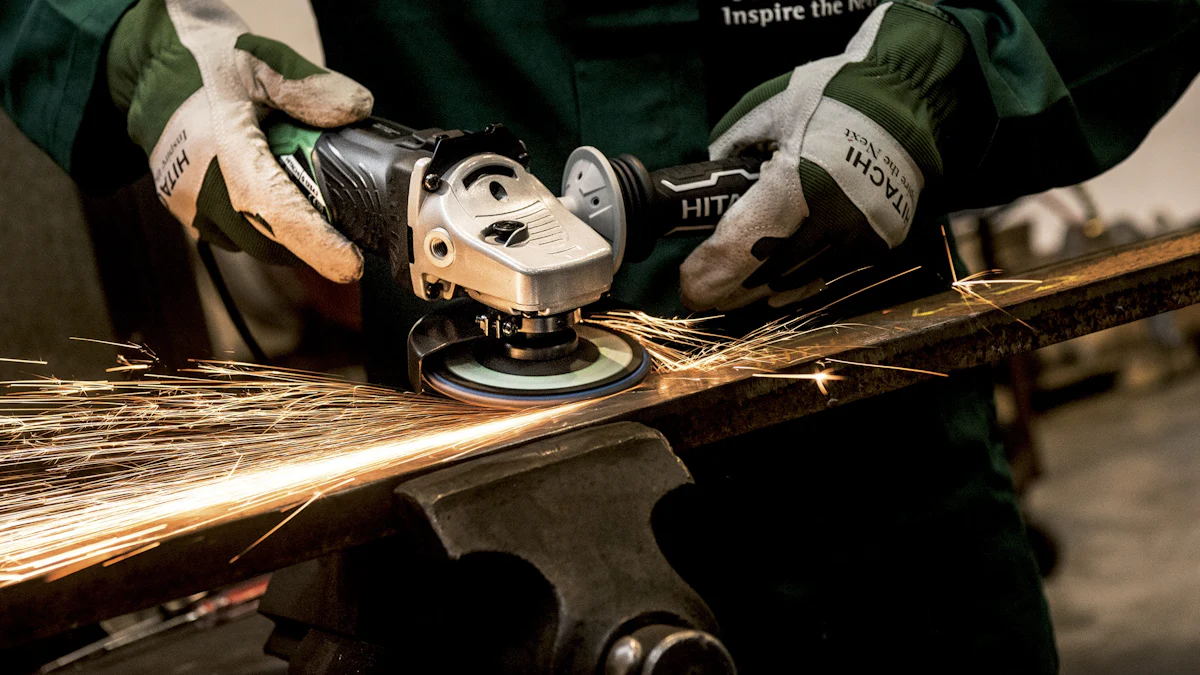
In recent times, with more individuals finding themselves with additional free time at home, there has been a surge in DIY projects. Drywall cutting tools play a crucial role in ensuring the success of these projects. This blog aims to guide DIY enthusiasts on the best tools available for precise and efficient drywall cutting. From manual cutting tools to power and specialty options, this comprehensive guide will equip readers with the knowledge needed to tackle their drywall projects effectively.
Manual Cutting Tools

When it comes to drywall cutting tools, DIY enthusiasts have a variety of manual options at their disposal. Utility Knives are versatile tools that excel in scoring drywall panels, allowing for precise cuts through the paper layer. These knives are also handy for trimming drywall when needed. For more intricate and detailed cuts, consider using a precision knife instead of a utility knife.
Keyhole Saws offer another manual cutting solution for DIY projects. These saws feature sharp teeth that can easily cut through drywall, making them ideal for creating openings or curves in the material. Their compact size and maneuverability make them a valuable addition to any toolkit.
For those looking to achieve perfect circles in their drywall projects, the Drywall Circle Cutter is a must-have tool. This specialized cutter is designed to create clean and accurate circular cuts with ease. By adjusting the blade to the desired radius, users can effortlessly cut precise circles in drywall sheets.
When using these manual cutting tools, remember to prioritize safety by wearing appropriate protective gear such as gloves and goggles. Always ensure that the blades are sharp for efficient cutting and replace them when necessary to maintain clean cuts.
Power Cutting Tools

Rotary Tools
Rotary tools are versatile instruments that offer a range of features for drywall cutting tools. These tools come with various attachments, such as cutting wheels and sanding bits, allowing users to adapt them to different tasks. The compact size of rotary tools makes them ideal for intricate cuts and detail work on drywall surfaces. Additionally, their high-speed rotation enables swift and precise cutting through drywall panels.
Benefits:
- Versatile tool for multiple applications
- Compact design for maneuverability
- High-speed rotation for efficient cutting
Usage Tips:
- Select the appropriate attachment for the desired cut.
- Adjust the speed settings based on the material thickness.
- Hold the rotary tool steadily to ensure accuracy in cutting.
Oscillating Multi-Tools
Oscillating multi-tools are another valuable addition to a DIY enthusiast’s toolkit when it comes to drywall cutting tools. These tools feature a side-to-side movement that allows for precise and controlled cuts in various materials, including drywall. With interchangeable blades, users can easily switch between cutting tasks without needing multiple tools, making them efficient for different project requirements.
Benefits:
- Precise cutting capabilities
- Interchangeable blades for versatility
- Controlled movements for accurate results
Usage Tips:
- Use the appropriate blade type based on the material being cut.
- Apply gentle pressure while guiding the tool along the cut line.
- Allow the oscillating motion to do the work without forcing the tool.
Jigsaws
Jigsaws are power tools known for their ability to make curved cuts in a variety of materials, including drywall. Their reciprocating blade motion allows users to maneuver around corners and create intricate shapes with ease. Jigsaws are particularly useful when working on projects that require detailed or custom cuts in drywall panels.
Features:
- Reciprocating blade motion
- Adjustable speed settings
- Bevel capabilities for angled cuts
Benefits:
- Ideal for curved and detailed cuts
- Versatile tool suitable for various materials
- Easy blade replacement system
Usage Tips:
- Start by marking the cut line accurately on the drywall surface.
- Choose a fine-toothed blade for smoother cuts.
- Maintain a steady hand while guiding the jigsaw along the marked line.
Specialty Cutting Tools
Drywall Rasp
Features:
- Sharp teeth for efficient cutting.
- Ergonomic handle for comfortable grip.
- Durable material for long-lasting use.
Benefits:
- Allows precise shaping of drywall edges.
- Ideal for smoothing rough surfaces.
- Versatile tool suitable for various DIY projects.
Usage Tips:
- Hold the rasp firmly while working on the drywall.
- Use gentle pressure to avoid over-shaving the material.
- Regularly clean the rasp to maintain its effectiveness.
Drywall T-Square
Features:
- L-shaped design for accurate measurements.
- Clear markings for easy visibility.
- Lightweight construction for portability.
Benefits:
- Ensures straight and precise cuts in drywall.
- Facilitates quick alignment of cutting lines.
- Reduces errors in measuring and marking tasks.
Usage Tips:
- Place the T-square along the cut line securely.
- Double-check measurements before making cuts.
- Utilize the T-square as a guide for scoring and cutting drywall accurately.
Recap:
- Having the right tools is essential for successful DIY projects.
- Proper tools ensure precise cuts and efficient work.
Summary of Best Tools:
- Utility Knives: Versatile for scoring and trimming drywall.
- Rotary Tools: Ideal for intricate cuts with various attachments.
- Drywall Rasp: Efficient for shaping edges and smoothing surfaces.
Final Recommendations:
- Choose tools based on project needs to achieve professional results.
- Embrace online resources like YouTube for valuable project insights.
